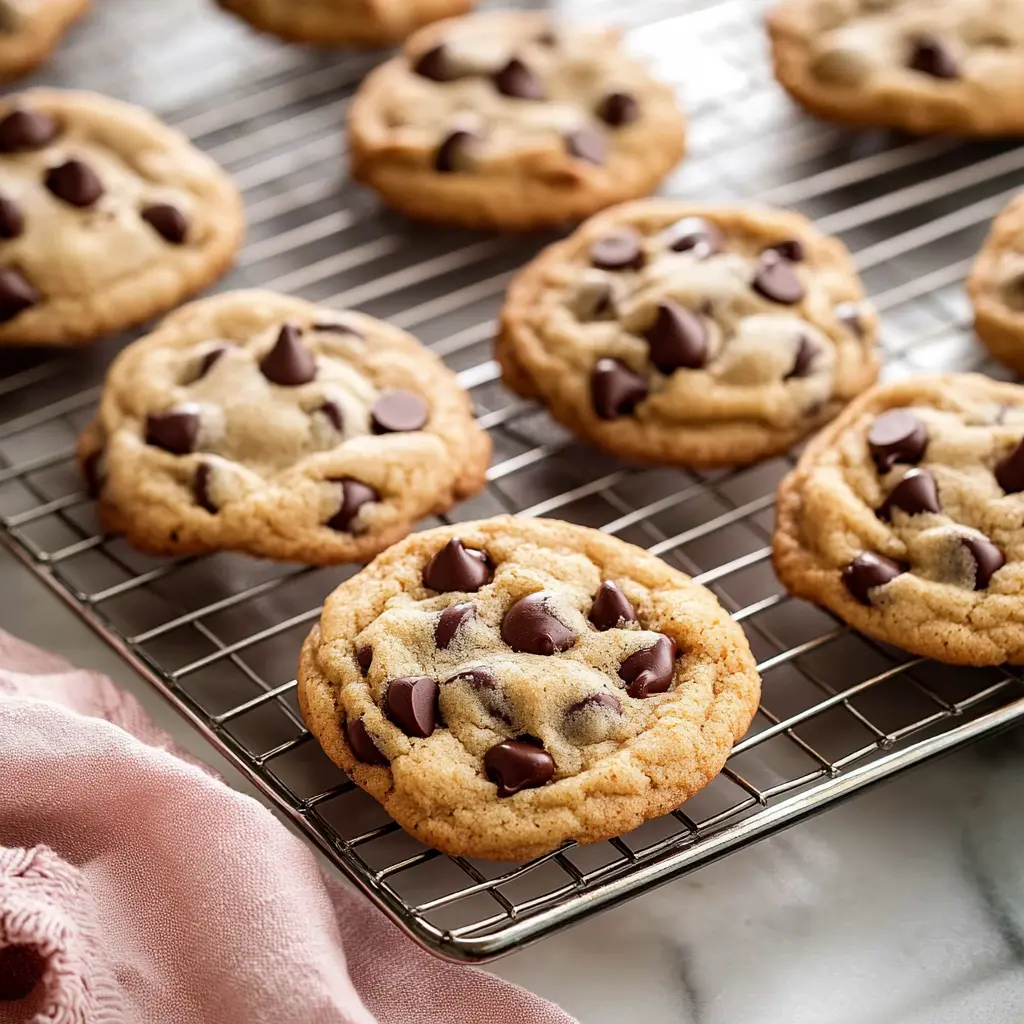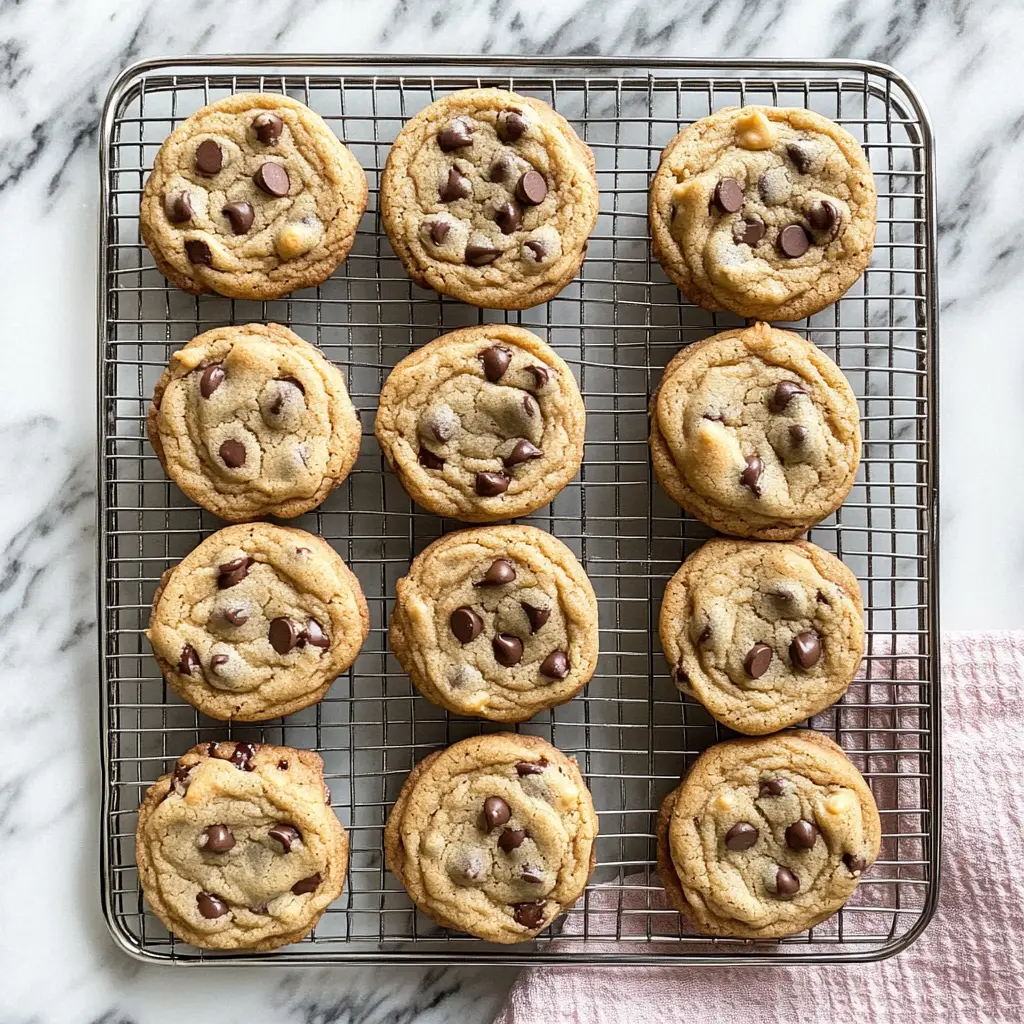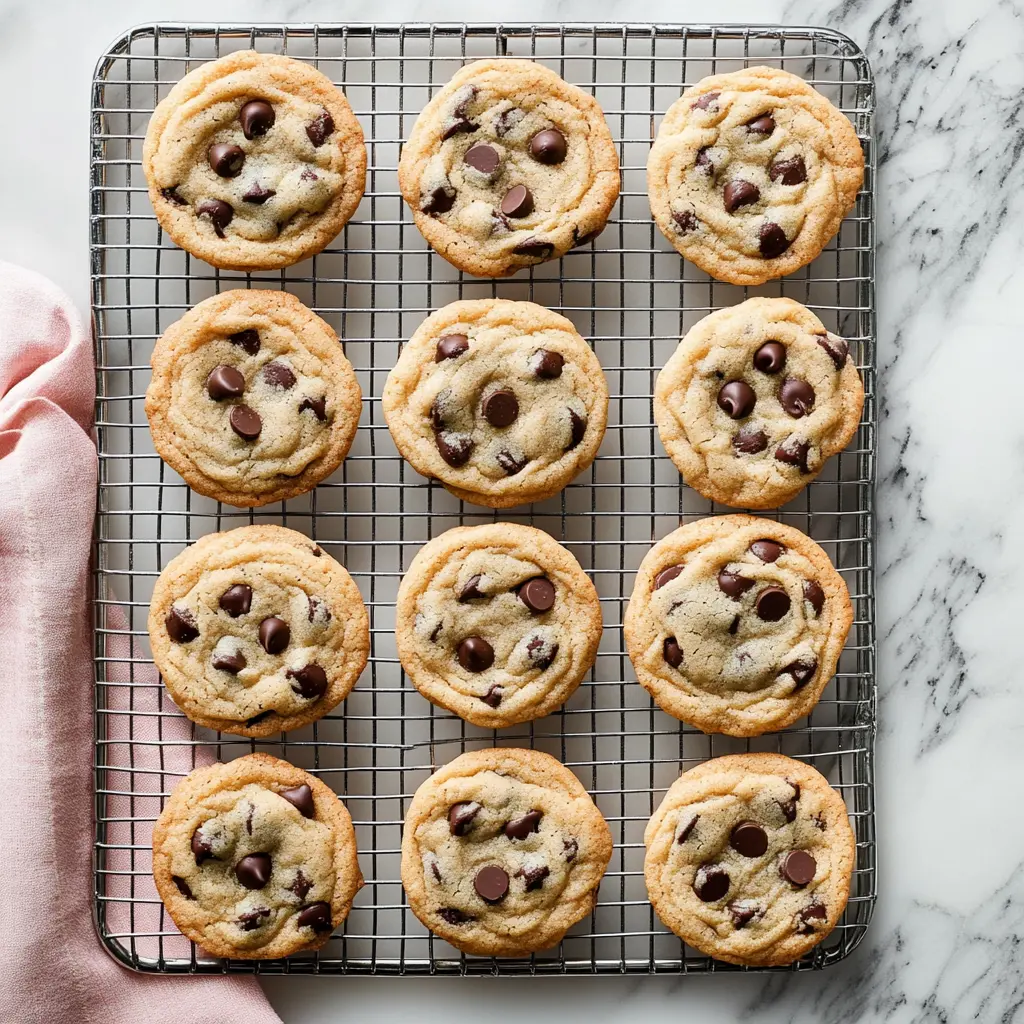Cookie Shelf Life: How Long Are Chocolate Chip Cookies Safe to Eat?
Introduction
Chocolate chip cookies are a beloved treat enjoyed by many, but understanding their shelf life is crucial to ensure they remain safe and delicious to eat. Knowing how long chocolate chip cookies stay fresh can help prevent food waste and health risks associated with spoiled cookies. In this comprehensive guide, we’ll explore the various factors affecting the shelf life of chocolate chip cookies, how to store them properly, and how to identify signs of spoilage. Whether you’re a home baker or a cookie connoisseur, these insights will help you enjoy your cookies to the fullest.
For a detailed guide on nutrition and tips, you might find this article on nutrition in mac and cheese quite informative.
Factors Affecting the Shelf Life
Ingredients Used
The ingredients in chocolate chip cookies significantly impact their shelf life. Preservatives, commonly found in store-bought cookies, extend freshness by inhibiting mold and bacterial growth. On the other hand, homemade cookies often lack these preservatives, making them more susceptible to spoilage. Butter, a key ingredient, can turn rancid over time, especially if not stored properly. The type of chocolate also plays a role; high-quality chocolate with fewer additives tends to stay fresh longer than lower-quality options. For a deeper understanding of how different ingredients can affect food, you might find this article on unveiling dairy facts insightful.
Baking Method
The method used to bake chocolate chip cookies can also influence their shelf life. Baking at the right temperature and duration ensures that cookies are properly cooked and have a reduced moisture content, which helps prevent mold growth. Overbaking can lead to dry, crumbly cookies, while underbaking can leave too much moisture, increasing the risk of spoilage. Techniques like using a convection oven can help achieve a more consistent bake, extending the freshness of your cookies.
Storage Conditions
Proper storage is crucial to extending the shelf life of chocolate chip cookies. Airtight containers are essential to keep out moisture and air, which can lead to staleness and spoilage. Storing cookies in a cool, dark place helps maintain their quality. For instance, a pantry or cupboard away from direct sunlight and heat sources is ideal. Refrigeration can also prolong freshness, especially for homemade cookies without preservatives. For more tips on ingredient storage, check out this guide on what to mix in mac and cheese.
Environmental Factors
Temperature and humidity are critical environmental factors affecting cookie longevity. High humidity can cause cookies to absorb moisture from the air, leading to a soft and stale texture. Conversely, very dry conditions can make cookies hard and brittle. Temperature fluctuations can accelerate spoilage; consistently cool environments are best for storing cookies. To learn about how similar environmental factors affect other foods, you might find this article on the effects of toasting bread quite interesting.
Understanding these factors can help you better preserve the deliciousness of your chocolate chip cookies. Next, let’s explore how different storage methods can further extend their shelf life.
Storage Method
Room Temperature
When stored at room temperature, chocolate chip cookies typically remain fresh for about 2 to 3 weeks. The key to maintaining their freshness is proper storage in an airtight container. Exposure to air can lead to staleness, while humidity can cause them to become soft and lose their crispness. It’s also essential to keep cookies away from direct sunlight and heat sources, as these can accelerate spoilage. To savor cookies at their best, always store them in a cool, dry place. For an ultimate comfort food recipe that pairs well with cookies, check out this Hamburger Mac and Cheese.
Refrigeration
Storing chocolate chip cookies in the refrigerator can extend their shelf life significantly. When properly refrigerated in an airtight container, cookies can stay fresh for up to 2 months. The cooler temperature slows down the growth of mold and bacteria, helping to preserve the cookies’ texture and flavor. However, it’s essential to allow refrigerated cookies to reach room temperature before serving, as cold can sometimes make them hard. For more tips on maintaining food quality, explore this guide on keeping mac and cheese creamy.
Freezing
Freezing is an excellent way to prolong the shelf life of chocolate chip cookies, keeping them fresh for up to 6 months or more. To freeze cookies effectively, place them in a single layer on a baking sheet to avoid sticking together, then transfer them to a freezer-safe bag or container. Labeling with the date helps keep track of their age. When ready to eat, simply thaw the cookies at room temperature or warm them in the oven for a freshly baked taste. This method is perfect for large batches or when you want to have a supply of cookies ready for any occasion.
Vacuum Sealing
Using vacuum-sealed packaging can significantly extend the shelf life of chocolate chip cookies. By removing air from the packaging, vacuum sealing reduces the oxidation process that leads to spoilage. Cookies stored this way can last up to several months at room temperature, and even longer if refrigerated or frozen. This method not only preserves the freshness and flavor but also helps maintain the texture of the cookies. For a similar approach to preserving creamy dishes, you might find this recipe for Crock Pot Mac and Cheese useful.
Understanding these storage methods can help you enjoy your chocolate chip cookies for longer periods, ensuring they remain as delicious as when they were first baked. Next, let’s look at how to identify if your cookies have gone bad.
How to Tell If Chocolate Cookies Have Gone Bad
Visual Indicators
One of the most apparent signs that chocolate chip cookies have gone bad is the presence of mold. Mold typically appears as green, white, or black spots on the surface of the cookies. Discoloration is another visual indicator; if the cookies develop an unusual hue or appear dull and faded, it’s a sign they are no longer fresh. Additionally, check for any fuzzy growths or strange patches that weren’t there when the cookies were fresh.
Texture Changes
The texture of chocolate chip cookies can also provide clues about their freshness. Fresh cookies should have a consistent texture, whether they are chewy or crunchy. Spoiled cookies often become excessively hard, dry, or crumbly. On the other hand, they might also turn overly soft and lose their structure, especially if they’ve been exposed to too much moisture. These texture changes are a strong indication that the cookies are past their prime. For more information on handling changes in food texture, you might find this article on whether cream cheese melts in a crock pot helpful.
Smell and Taste
The smell and taste of chocolate chip cookies are critical in identifying spoilage. Fresh cookies should have a pleasant, sweet aroma with hints of chocolate and butter. If the cookies emit an off-putting or sour smell, it’s a clear sign they’ve gone bad. Tasting a small piece can also help confirm spoilage; if the flavor is off, sour, or has a strange aftertaste, it’s best to discard the cookies. Spoiled cookies can also taste stale or bland, lacking the vibrant flavors they had when fresh. To understand more about preventing spoilage and handling ingredients correctly, explore this guide on cream cheese curdle causes and solutions.
Recognizing these signs of spoilage ensures that you can enjoy your chocolate chip cookies at their best and avoid any potential health risks. Next, we will discuss some tips for keeping your cookies fresh for a longer time.
Special Considerations for Different Types of Chocolate Chip Cookies
Gluten-Free Cookies
Gluten-free chocolate chip cookies require specific considerations to ensure they stay fresh. These cookies often use alternative flours, like almond or rice flour, which can affect their shelf life. Gluten-free cookies tend to be more sensitive to moisture, so it’s crucial to store them in airtight containers to prevent them from becoming soggy. They can last up to a week at room temperature but refrigerating them can extend their freshness up to two weeks. For longer storage, freezing is the best option, allowing them to last for up to three months. If you’re interested in more gluten-free recipes, check out this guide on gluten-free mac and cheese.
Vegan Cookies
Vegan chocolate chip cookies, which use plant-based ingredients instead of dairy and eggs, can have a different shelf life compared to traditional cookies. The absence of animal fats and proteins means these cookies might stay fresh slightly longer at room temperature, typically lasting around one to two weeks if stored properly. However, because they don’t contain preservatives, refrigeration is recommended to extend their freshness for up to a month. Freezing vegan cookies can also keep them good for up to six months. For more on food pairings, consider exploring what goes well with mac and cheese.
Low-Sugar Cookies
Low-sugar chocolate chip cookies present unique challenges regarding shelf life. The reduced sugar content means these cookies have less of a preservative effect, which can lead to a shorter shelf life. They typically remain fresh for about a week at room temperature. To extend their freshness, store them in the refrigerator for up to two weeks, or freeze them for up to three months. Pay attention to any texture changes, as low-sugar cookies can become hard and less enjoyable if not stored correctly. For insights into cheese pairings that might complement your baking adventures, check out this article on the best cheeses for mac and cheese.
By taking these special considerations into account, you can ensure that different types of chocolate chip cookies retain their quality and taste for as long as possible. Next, we will conclude with a summary of the key points covered in this guide.

Extending Shelf Life through Baking and Ingredients
Use of Natural Preservatives
Incorporating natural preservatives into your chocolate chip cookie recipe can significantly extend their shelf life. Ingredients such as lemon juice or vinegar contain natural acids that help inhibit the growth of mold and bacteria. These natural preservatives work by lowering the pH level of the cookies, creating an environment that is less conducive to spoilage. A small amount, typically a teaspoon of lemon juice or vinegar, can be added to the dough without altering the flavor of the cookies significantly. Additionally, using honey or molasses, which are natural humectants, can help retain moisture and keep the cookies soft and chewy for a longer period. These ingredients not only enhance the flavor but also contribute to the longevity of your cookies. For a comprehensive guide on using various ingredients in recipes, check out this article on white cheddar mac and cheese.
Adjusting Baking Times and Temperatures
The way you bake your cookies can also impact their shelf life. Adjusting baking times and temperatures ensures that cookies are thoroughly baked, which reduces moisture content and extends their freshness. Baking at a slightly lower temperature for a longer time can help achieve a more even bake, reducing the risk of undercooked centers that spoil quickly. Conversely, slightly higher temperatures for a shorter period can create a firmer outer crust that protects the softer interior. Experimenting with your oven settings can help you find the perfect balance. Additionally, cooling the cookies properly before storing them is crucial. Cookies should be completely cooled on a wire rack to prevent residual heat from creating moisture inside the storage container, which can lead to spoilage. For more on achieving the best results in baking, consider this guide on the best cheese for smoking.
Ingredient Substitutions for Longer Shelf Life
Substituting certain ingredients in your cookie recipe can also help prolong their shelf life. For example, using margarine instead of butter can make cookies last longer because margarine has a higher melting point and is less prone to becoming rancid. Additionally, using brown sugar instead of white sugar can retain more moisture in the cookies, keeping them softer for a longer period. Another useful substitution is using vegetable oil or shortening, which are more stable at room temperature compared to butter. For those looking to reduce sugar content while maintaining shelf life, using sugar substitutes like xylitol or erythritol can be beneficial as they don’t promote the same moisture loss that regular sugar does. These small changes can make a significant difference in how long your cookies stay fresh.
Techniques to Prevent Staleness
There are several techniques you can employ to prevent your cookies from becoming stale. Double baking is one such method, where cookies are baked twice to reduce their moisture content. This technique is often used for biscotti but can be adapted for chocolate chip cookies to enhance their shelf life. Another technique is adding a small amount of glycerin to the dough, which helps retain moisture and keeps the cookies soft. Glycerin is a humectant, which means it attracts moisture from the air, helping to prevent the cookies from drying out. Additionally, storing cookies with a slice of bread in the container can help maintain moisture levels, as the bread will absorb any excess moisture, keeping the cookies fresh. For more innovative ways to enhance your recipes, you might find this article on doctoring up white cheddar mac and cheese quite insightful.
Packaging Innovations
Modern packaging methods can play a crucial role in keeping cookies fresher for longer periods. Vacuum sealing is one of the most effective techniques, as it removes air from the packaging, significantly reducing oxidation and moisture loss. Mylar bags with oxygen absorbers are another innovative solution, providing an airtight environment that can extend shelf life by months. Additionally, resealable pouches with moisture control packs help maintain the ideal humidity level inside the package, preventing cookies from becoming too dry or too moist. Using silica gel packets, commonly found in shoe boxes, can also help keep the environment inside the package dry. For creative ways to present and store your culinary creations, explore this ultimate guide to creating the perfect mac and cheese bar.
Advanced Preservation Techniques
For those looking to go the extra mile, advanced preservation techniques can further extend the shelf life of chocolate chip cookies. Using edible coatings made from substances like chitosan can create a protective barrier around the cookies, slowing down moisture loss and oxidation. Modified atmosphere packaging (MAP) is another technique where the composition of the internal atmosphere of the package is altered, usually by reducing oxygen levels and increasing nitrogen levels, to extend freshness. These methods are often used in commercial settings but can be adapted for home use with the right equipment.
Experimenting with Flavors and Textures
Experimenting with different flavors and textures can also contribute to the longevity of your cookies. Adding spices like cinnamon, which has natural antimicrobial properties, can help preserve cookies. Similarly, incorporating dried fruits, nuts, or seeds that have been properly dehydrated can enhance flavor and add nutritional value while helping to maintain the cookies’ texture. These ingredients not only make the cookies more interesting but also contribute to their shelf life by reducing moisture content.
By implementing these baking techniques and ingredient adjustments, you can ensure that your chocolate chip cookies stay fresh and delicious for as long as possible. In the next part, we’ll conclude with a summary of the key points covered in this guide.

Conclusion
Proper storage and baking techniques are essential for extending the shelf life of chocolate chip cookies. By incorporating natural preservatives, adjusting baking times and temperatures, using appropriate storage containers, and employing advanced preservation methods, you can keep your cookies fresh and delicious for longer periods. Remember, the right storage conditions and careful handling can make a significant difference in maintaining the quality of your cookies. For ideas on enhancing your meals with perfect pairings, you might find this article on what to serve with seafood mac and cheese helpful.
FAQs
How long do homemade chocolate chip cookies last?
Homemade chocolate chip cookies typically last about a week when stored at room temperature in an airtight container. Refrigerating them can extend their shelf life to two weeks, while freezing can keep them fresh for up to six months. Proper storage is key to maintaining their quality and preventing spoilage.
Can you eat expired chocolate chip cookies?
While it’s generally safe to eat chocolate chip cookies a little past their expiration date, their quality might decline. They may become stale, lose flavor, or develop an off taste. However, if there are any signs of mold, an unusual odor, or a change in texture, it’s best to discard them to avoid the risk of foodborne illness.
How do you store chocolate chip cookies to keep them fresh?
To keep chocolate chip cookies fresh, store them in an airtight container at room temperature away from direct sunlight and heat sources. Refrigerating or freezing cookies can extend their shelf life significantly. Adding a slice of bread to the container can also help maintain moisture and prevent the cookies from becoming too dry.
Do chocolate chip cookies go bad in the fridge?
Chocolate chip cookies can last longer in the fridge, up to two weeks. However, they can absorb odors from other foods if not stored properly. Ensure they are in an airtight container to prevent this. Additionally, bringing refrigerated cookies to room temperature before eating will improve their texture and taste.
What happens if you eat a spoiled cookie?
Eating a spoiled cookie can lead to foodborne illness, which might cause symptoms like nausea, vomiting, stomach cramps, and diarrhea. Spoiled cookies may show signs of mold, have an off smell, or taste strange. It’s always best to err on the side of caution and discard any cookies that appear to be spoiled.
For more ideas on enhancing your culinary creations, check out this article on the best toppings and mix-ins for mac and cheese.



